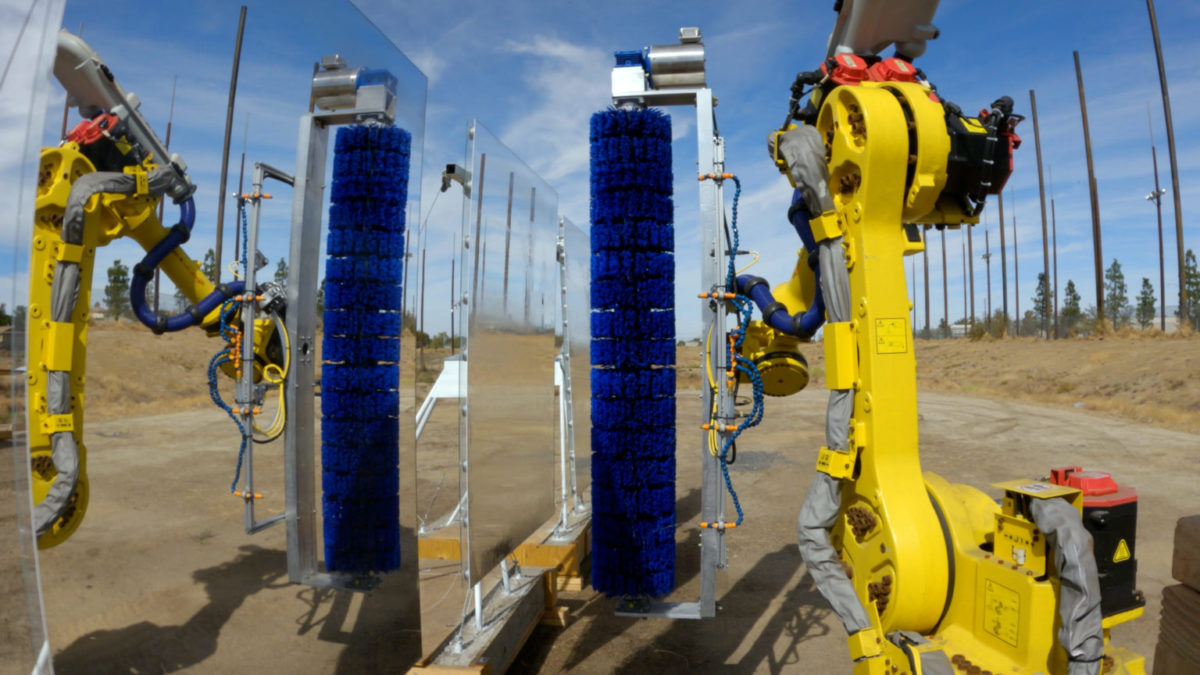From pv magazine Australia and pv magazine USA
An Australian consortium has filed a patent for a new design for the high-temperature molten salt tanks used in thermal energy storage systems such as concentrated solar power (CSP) projects.
CSP systems use mirrors and receiving towers to gather and store the energy from the sun. The technology has had a turbulent history, however. It was initially hailed as a great solution, but was later wedged out by cheap solar PV, combined with issues that have detracted from its great advantage: dispatchability.
One of those hindrances includes the hot tanks for molten storage systems, as they have tended to leak due to thermal cycling and fatigue, resulting in substantial production losses for CSP projects.
Now, a consortium that includes Sydney-based Vast Solar – as well as CyD, Solar Dynamics, and Alia Energy Consulting and Critical Engineering – says that it has jointly developed a new tank design that addresses the issue, drawing on input from the Advanced Materials Team at the Australian Solar Thermal Research Institute (ASTRI), led by the Queensland University of Technology and Flinders University.
The consortium said it developed the new Flexitank design by carefully analyzing, understanding and learning from previous failures. The design increases the flexibility of the floor of the tank and mitigates the risk of failure associated with thermal cycles by absorbing the repeated expansion and contraction typically encountered in such tanks, the consortium said.
“Once we understood the tank failure modes and started testing the physical properties of the incumbent materials, we realised that flexibility is the key to overcoming thermal cycling and fatigue,” said Vast Solar CEO Craig Wood. “The economics of thermal storage are compelling, and we are delighted that our work will now deliver much needed reliability.”
Dominic Zaal, the director of ASTRI, said that the company is “confident” that the new Flexitank “will substantially improve the operation performance of CSP systems moving forward.”
Vast Solar
In May, Vast Solar called for expressions of interest from contractors to expedite its plans for a 50 MW hybrid power plant in Mount Isa, Australia. The project will combine solar PV, a large-scale battery and gas engines with concentrated solar thermal power technology.
Unlike traditional concentrated solar thermal power technology, which uses molten salt for heat transfer and for storage, Vast Solar has developed a low-cost, modular technology with integrated thermal storage that uses sodium for heat transfer and molten salt for on-demand storage, both of which create steam to drive a turbine.
The technology allows plants to be configured with four to 16 hours of storage and generators of up to 500 MW. And it has been proven at Vast Solar’s 1 MW pilot plant in Jemalong, New South Wales, which has been delivering electricity to the grid since early 2018. The Jemalong solar farm sits alongside an operational 1.1 MW CSP pilot plant deployed by Vast Solar.
Robotic cleaning
Separately, Heliogen, a California-based CSP developer, held the first technical demonstration of its Installation and Cleaning Autonomous Robot and Utility Solution (ICARUS). It is a system of autonomous robots designed to clean heliostats, which are the reflective mirrors in CSP systems.
Heliostats reflect sunlight into a collection tower, where the light and heat is converted to electricity and usable thermal energy. Recently, the company partnered with Bloom Energy to produce hydrogen fuel.
Cleaning the heliostats can be expensive and labor-intensive. Historically, it was therefore only done every few months, said Heliogen. Now, the ICARUS robots can continuously clean systems to keep production levels high. The ICARUS system uses GPS, ultrasonic rangefinders, and light detection and ranging (LIDAR) sensors to operate fully autonomously.

The system can also deliver the heliostats from an assembly line or inventory location to the field, and install them with accuracy up to 2 cm, said Heliogen. It can work around the clock, day or night, with minimal physical labor. The robots can operate in both structured and unstructured environments and have built-in obstacle and structure avoidance systems.
“By taking advantage of huge boosts in processing power due to the advances of Moore’s Law, AI, computation, and computer vision, Heliogen aims to make solar energy more affordable than ever before,” said Bill Gross, the founder and CEO of Heliogen.
ICARUS will be deployed across Heliogen’s facilities by 2023.
This content is protected by copyright and may not be reused. If you want to cooperate with us and would like to reuse some of our content, please contact: editors@pv-magazine.com.





Robo-Cleaning is a great idea, but IDK about panel installation. You still need to run electrical and secure them to the ground in all weather conditions (rain, runoff — that dirt pile is gonna move).
Why are they using a weighted base instead of poles like everyone else? That base has to be $$. Plus, what keeps it from rocking on the ground? Ground is bumpy and rain tends to move soil (and even gravel) around, that’s why “everyone” uses a pole anchor. A base + cinderblocks could make sense, if it’s less than $10 / m^2, otherwise they’re spending a lot of money on the form just to save on the labor.